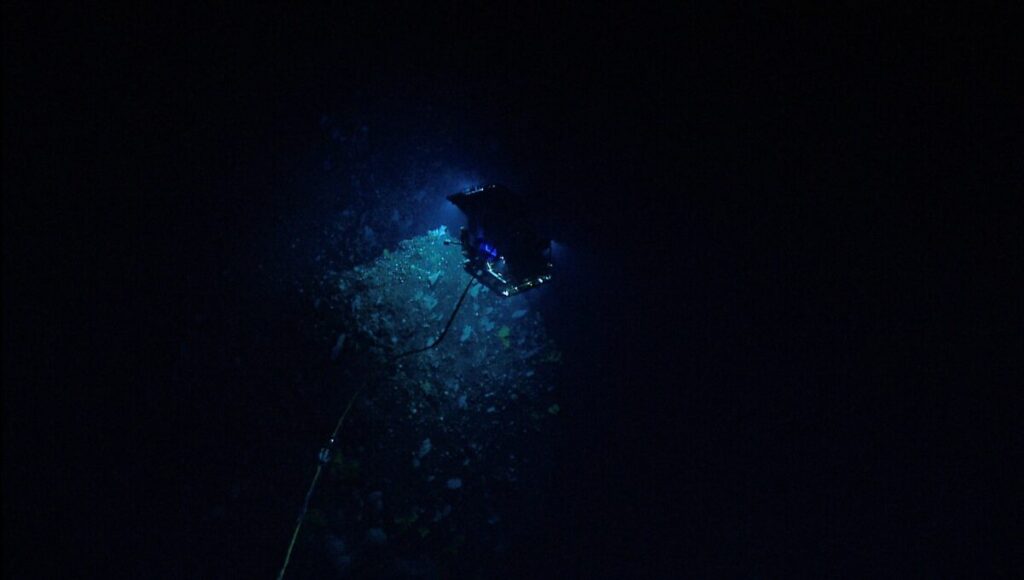Scientists have discovered ‘dark oxygen’ being produced more than 13,000 feet below sea level. Curious to know what it is? Read on.
Ocean scientist Andrew Sweetman encountered a strange phenomenon in the remote Pacific Ocean. Initially, he believed his monitoring equipment was defective. His sensors indicated oxygen production on the 13,100-feet-deep seabed without sunlight, CNN reported.
The Discovery of Dark Oxygen

Sweetman instructed his students to return the sensors to the manufacturer for testing because they were producing “gibberish.” However, the manufacturer consistently confirmed that the sensors were functioning and calibrated correctly. This persistent anomaly led Sweetman to further investigate the occurrence, a phenomenon now being referred to as ‘dark oxygen’ production.
While assessing marine biodiversity in a potential mining area, Sweetman unexpectedly observed that ‘dark oxygen‘ was being produced on the seafloor. This area contains polymetallic nodules, which have formed over millions of years through chemical processes involving shell fragments, squid beaks, and shark teeth, the publication added.
Traditional Oxygen Production
Photosynthetic organisms like plants, plankton, and algae use sunlight to produce oxygen. This oxygen then cycles into the ocean depths, sustaining marine life. Previous deep-sea studies have shown that organisms there only consume oxygen and do not produce it. This conventional understanding has been the foundation of marine biology for years.
However, Sweetman’s team’s recent research challenges this belief. They found oxygen production occurring without photosynthesis, a discovery that has far-reaching implications for our understanding of oceanic processes and life on Earth. Sweetman noted that such unexpected findings would require careful consideration and further investigation.
Detailed Research and Methods

The initial experiment in 2013 didn’t convince Sweetman that oxygen was being produced on the seafloor. The results were too extraordinary to accept without further evidence. However, in 2021, using a backup method that yielded the same result, he realized oxygen was indeed being produced there. This secondary confirmation prompted him to delve deeper into the mystery of dark oxygen.
Sweetman’s team deployed a variety of sophisticated instruments to measure oxygen levels, ensuring that the readings were accurate and consistent. These instruments included oxygen sensors capable of detecting minute changes in the environment, even in the extreme conditions of the deep sea. The repeated confirmations from different methods and sensors strengthened the case for the existence of dark oxygen.
Implications for Marine Biology
The discovery of dark oxygen has profound implications for marine biology and our understanding of deep-sea ecosystems. Traditionally, it was believed that oxygen at such depths could only be a remnant of surface production, slowly diffusing down. The revelation that oxygen can be produced on the seafloor itself opens up new avenues for research.
This finding challenges the long-standing belief that deep-sea organisms solely rely on oxygen transported from surface waters. It suggests that there might be unknown biological or chemical processes at play, producing oxygen in the absence of sunlight. This could redefine how we understand life in extreme environments and the adaptability of marine organisms.
The Role of Polymetallic Nodules
One of the intriguing aspects of this discovery is the role of polymetallic nodules. These nodules are rich in metals like manganese, nickel, cobalt, and copper, and are of significant interest for deep-sea mining. They are formed through chemical processes over millions of years and are found scattered across the ocean floor.
The presence of these nodules in the area where dark oxygen is being produced suggests a possible link. The nodules could be facilitating chemical reactions that lead to oxygen production. Understanding this relationship could provide valuable insights into both marine chemistry and the potential impacts of deep-sea mining.
Origin of Life and Future Research
Sweetman mentioned that understanding oxygen production on the ocean floor might provide insights into the origin of life. He noted that life may have evolved on deep-sea hydrothermal vents, where extreme conditions and unique chemical processes could have given rise to the first organisms. Discovering that seawater electrolysis can produce oxygen in the deep sea could offer new perspectives on how life started on Earth, CNN quoted him as saying.
This discovery also has implications for the search for life beyond Earth. If oxygen can be produced in the dark depths of our oceans, it raises the possibility that similar processes could occur on other planets and moons with subsurface oceans, such as Europa or Enceladus.
“I hope it’s the start of something amazing,” Sweetman added, reflecting the excitement and potential of this groundbreaking discovery




